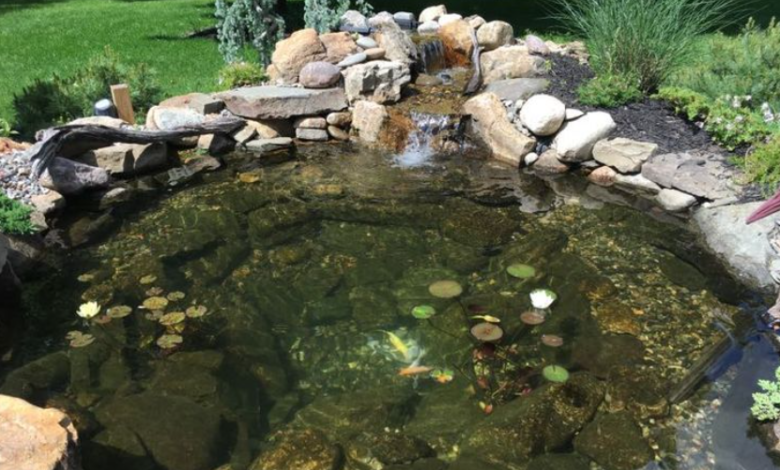Cleaner Ponds: Tips and Techniques for a Healthy, Clear Water Garden

A beautiful pond is a source of tranquility and natural beauty in any garden, but maintaining a cleaner pond can be a challenge. Over time, ponds can become murky, algae-infested, and unhealthy for fish and plants. However, with the right knowledge and tools, keeping your pond cleaner and healthier is completely achievable.
In this article, we explore practical tips and effective methods to help you maintain cleaner ponds year-round, ensuring a vibrant aquatic environment that you can enjoy every day.
Why Is It Important to Have a Cleaner Pond?
Cleaner ponds are not just visually appealing; they are essential for the health of your aquatic ecosystem. Dirty or polluted water can lead to:
- Algae blooms: Excess nutrients cause rapid algae growth, which clouds the water and harms fish.
- Low oxygen levels: Decomposing waste reduces oxygen, stressing fish and beneficial bacteria.
- Unhealthy fish: Poor water quality leads to disease and increased fish mortality.
- Clogged filters: Debris and organic matter can overwhelm filtration systems, reducing their efficiency.
Maintaining cleaner ponds helps create a balanced ecosystem where fish, plants, and microorganisms thrive.
See also: How Asunnotkytömaa Is Shaping the Future of Technology
Top Tips for Cleaner Ponds
1. Regular Debris Removal
Leaves, twigs, and other organic matter that fall into your pond decompose and release nutrients that feed algae. Use a pond net or skimmer regularly to remove surface debris. In autumn, consider installing a leaf guard or net cover to reduce the amount of debris entering your pond.
2. Install an Efficient Filtration System
A high-quality filtration system is crucial for cleaner ponds. Mechanical filters remove physical debris, while biological filters foster beneficial bacteria that break down harmful waste products. Consider upgrading to automatic filters like drum filters or pressurized filters for less maintenance and better results.
3. Control Algae Growth
Algae can quickly turn a pond green and murky. To control algae:
- Use UV clarifiers that expose algae cells to ultraviolet light, killing them effectively.
- Introduce floating or submerged plants like water lilies or hornwort to reduce sunlight penetration and nutrient availability.
- Avoid overfeeding fish, as excess food contributes to nutrient buildup.
4. Aerate the Water
Oxygen-rich water supports fish health and beneficial bacteria. Installing a pond aerator or fountain promotes water circulation and oxygenation, helping maintain a cleaner pond environment.
5. Maintain a Balanced Fish Population
Overstocking your pond can overwhelm your filtration system and increase waste production. Maintain a balanced fish population appropriate for your pond size to prevent water quality issues.
6. Regular Water Testing
Test your pond water regularly for parameters like pH, ammonia, nitrite, and nitrate. Keeping these within optimal ranges ensures a cleaner pond and a healthier ecosystem.
7. Partial Water Changes
Periodically replacing 10-20% of your pond water with fresh water dilutes accumulated toxins and nutrients, helping to maintain clarity and water quality.
Natural Solutions for Cleaner Ponds
Besides technology and maintenance, natural solutions can enhance pond cleanliness:
- Beneficial Bacteria: Adding pond-specific beneficial bacteria products can accelerate the breakdown of organic waste.
- Barley Straw: Barley straw releases compounds during decomposition that inhibit algae growth naturally.
- Aquatic Plants: Besides shading and nutrient absorption, plants provide habitat for helpful microorganisms.
Common Mistakes to Avoid
- Neglecting Filter Maintenance: A clogged or dirty filter can do more harm than good.
- Using Chemicals Excessively: Harsh chemicals can disrupt pond balance and harm beneficial organisms.
- Overfeeding Fish: Excess fish food decomposes quickly and pollutes the water.
- Ignoring Seasonal Changes: Pond care varies with seasons; neglecting autumn leaf cleanup or winter preparation can lead to dirty ponds.
Professional Help and Upgrades
For large or heavily stocked ponds, consulting with pond professionals or upgrading to advanced filtration systems like Evolution Aqua filters or Burtons Aquatics combi drum filters can be worthwhile investments. These systems offer superior filtration efficiency, automated cleaning, and biological balance to maintain cleaner ponds effortlessly.
Final Thoughts
Maintaining cleaner ponds requires consistent effort and a combination of the right tools and techniques. From regular debris removal and proper filtration to natural algae control and balanced fish stocking, every step counts toward achieving clear, healthy water.
With patience and care, your pond will not only look stunning but also provide a safe, thriving environment for fish, plants, and wildlife. Whether you’re a casual garden pond owner or a dedicated koi keeper, following these tips will ensure your pond remains a sparkling gem in your outdoor space.







